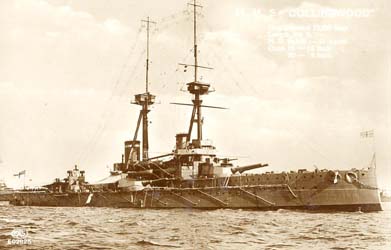Recycling
of building materials isn't a new idea in Caerleon. The stone
pillars in the basement of the original
museum which supported the ground floor were previously part
of Caerleon's old market house and believed to be Roman in origin.
The pillars you see in the picture above supporting the roof were
formerly a ship's masts… Mr A Golledge, a local builder,
acquired them when HMS Collingwood was broken up in Newport some
time around 1922.
In 1987
the new Roman Legionary Museum was opened. The only part of
the old museum to survive was the façade. 'Ikey' Miles
(now saldly deceased) cleared unwanted bits and pieces when
the Museum was rebuilt and some portions of the masts were given
a third (or fourth) lease of life. John Miles, (Ikey's son)
told us "He was permitted to have the masts for fire
wood providing he cut them up and removed them from the site,
it took him about a week to saw them into lengths that he could
carry, and move to Mill Street. We did not know the Roman pillars
were ships masts at the time, they were made up of between 6
to 8 individual pieces across the diameter that were shaped
and nailed together, the roman looking architrave was then nailed
on top. The majority of the four pillars were burnt on Ikeys
two wood burning stoves but they were really difficult to cut
with a chainsaw as there were nails everywhere, the bottom of
one is still in use in a Mill Street garden as a bird table"
Note: HRH
Duke of York, later King George VI served on board HMS Collingwood
and saw active service in 1916 at the Battle of Jutland in 1916.

Above HMS
Collingwood
Below: Ikey Miles taking a well earned rest - sawing up the
masts was hard work, it took him about a week to cut them into
lengths that could be moved to his house in Mill Street.